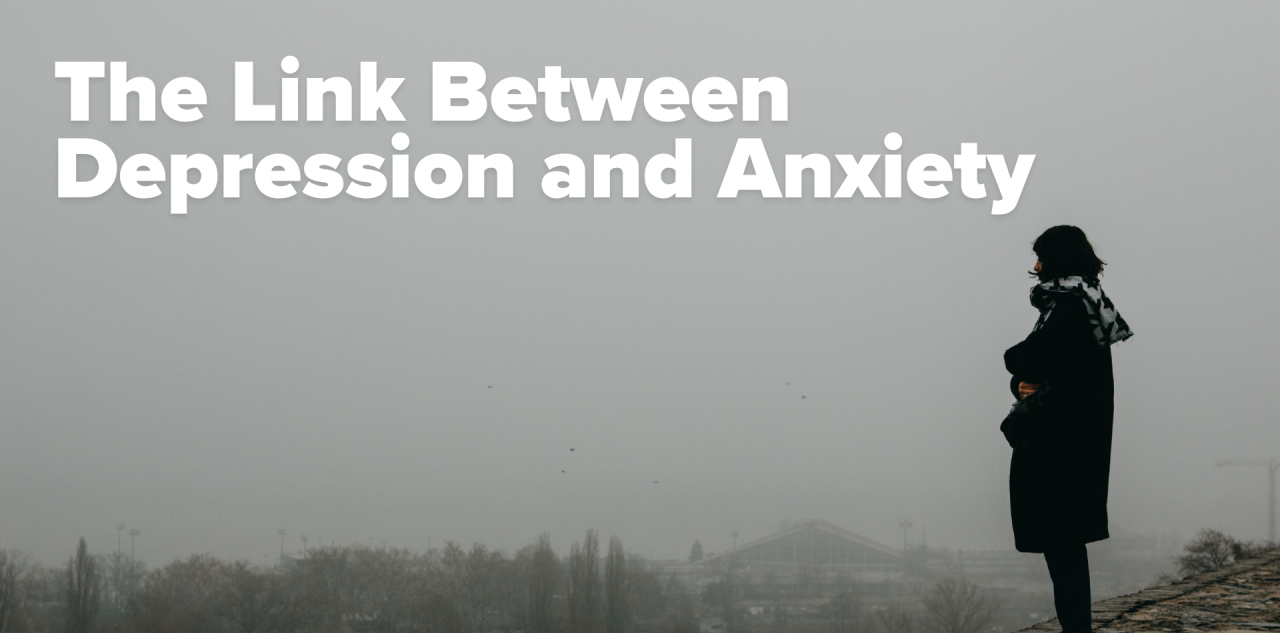
The Link Between Anxiety and Depression: How to Recognize Both
Anxiety and depression are two of the most common mental health conditions worldwide. They affect millions of people every year. Although the symptoms of each are a little different, they share a close relationship. Indeed, it is not at all rare for a person to suffer from both at the same time. It’s important to understand how these two are related and how the signs of each are identified so as to manage and treat them.
The overlapping nature of anxiety and depression
While these are two distinct mental disorders, anxiety and depression share much in common. Anxiety may appear as excessive worry, fear, or nervousness, while depression is characterized by persistent sadness, hopelessness, and a lack of interest in activities once enjoyed. Often, the boundaries between the two conditions are not sharply defined. Many people experience anxiety as part of depression, and many depressed people experience anxiety.
For instance, a person with GAD will be always on edge and worried about mundane things, which may result in feelings of exhaustion, hopelessness, and sadness. In contrast, depression may manifest as intense sadness that leads to a loss of interest in life, and worries or anxiety about the future may worsen their condition. This can lead to a vicious cycle, where each problem will be worsening the other one and makes it much more challenging to deal with life at hand.
Knowing Signs of Anxiety
There are numerous ways anxiety can appear. Here are some of the most common symptoms:
1.Constant worries: Being in an agitated stateRacing thoughts or an inability to control thoughts, particularly worrisome ones. These include a racing heart, sweating, dizziness, or muscle tension,Restlessness or an inability to relax.
2.Sleep disturbances: Either trouble falling asleep or staying asleep.
3.Avoidance behavior: Where you may avoid certain situations or places due to fear or anxiety.
It is important to note that not all anxiety symptoms are related to specific triggers. Anxiety can be generalized, with worries that seem to pop up without a clear cause, or it can be situation-specific, such as social anxiety or panic attacks.
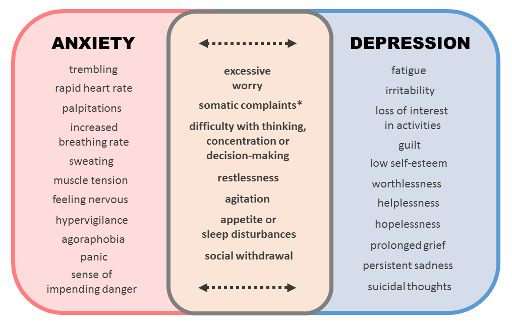
Recognizing Depression Symptoms
Depression often manifests itself through being overwhelmed by feelings of sadness or hopelessness. It can also manifest physically, emotionally, and cognitively. Some of the most common symptoms are:
1. Recurrent feelings of emptiness, hopelessness, or pervasive and persistent feelings of sadness.
2.Loss of interest or pleasure in activities once considered a source of enjoyment.
3.Fatigue or loss of energy even after rest.
4.Poor ability to concentrate or make decisions.
5.Sleep disturbances: either insomnia or sleeping too much.
6.Recurring thoughts of death or suicide.
Unlike anxiety, depression can feel like emotional numbness, in which everything feels overwhelming or out of reach. If these feelings last for more than two weeks, then that someone is dealing with clinical depression and should seek professional help.
How Anxiety and Depression Often Co-Exist
Relationship between anxiety and depression can be complex, as they mostly occur together, amplifying each other. A person suffering from anxiety may start to feel overwhelmed by the constant state of fear or worry and develop depressive thoughts such as, “I can’t handle this anymore” or “Nothing will ever get better.” Similarly, a person with depression may be so down and hopeless that their natural response is anxiety about their future, relationships, or ability to function.
Research has shown that if one condition is present, the chances of developing the other are increased. Anxiety disorders are among the most common co-occurring conditions for people diagnosed with depression, and the presence of both can have a significant impact on a person’s ability to manage daily life.

What Can You Do About It?
The good news is that both anxiety and depression are treatable. The first step toward recovery is to recognize the symptoms. If you find yourself experiencing both anxiety and depression, seek professional help. A mental health professional can diagnose the conditions and develop a treatment plan tailored to your needs. Treatment options may include:
1. Therapy: Cognitive Behavioural Therapy (CBT) is a widely used technique that helps a person identify problematic thought patterns and replace them with healthier, more productive thinking. Other modalities of therapy include talk therapy, exposure therapy, and similar others.
2.Medication: Antidepressants and anxiety medications can be prescribed to help one balance the chemicals in the brain relating to mood and anxiety level.
3.Lifestyle Changes: Regular physical exercise, proper nutrition, and stress management techniques such as mindfulness or meditation can significantly reduce the symptoms of anxiety and depression.
4.Support Networks: Reaching out to friends and family who are supportive or joining a support group is helpful in providing a sense of connection and understanding.
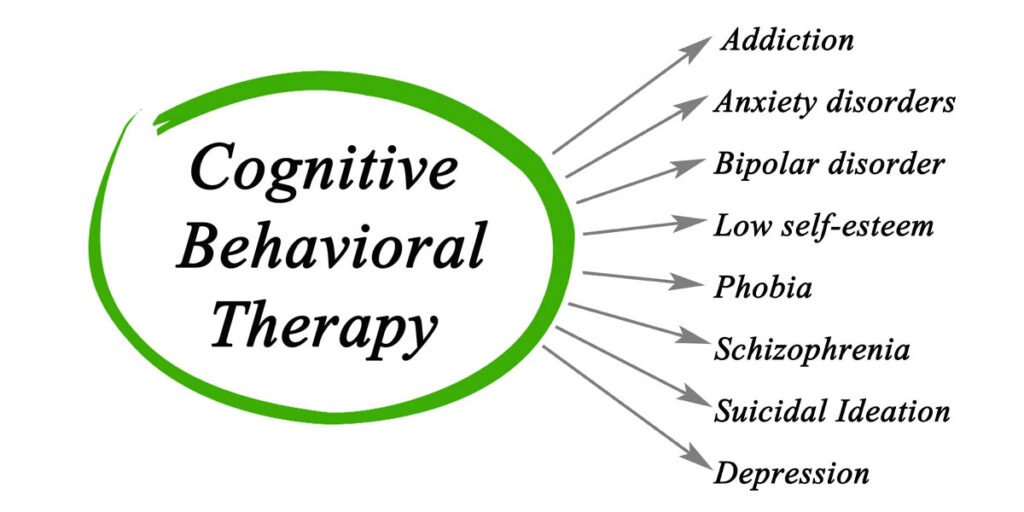
Conclusion
It is very essential for anyone experiencing these conditions to understand the connection between anxiety and depression. Early recognition of the overlapping symptoms and seeking professional help can lead to a better outcome and quality of life. If you, or someone you know is suffering from anxiety, depression, or a combination of both, it is quite okay to ask for help. You are not alone in this fight and with the right treatment, there is hope to manage your symptoms and find relief.
To read more about the following topic, click below:
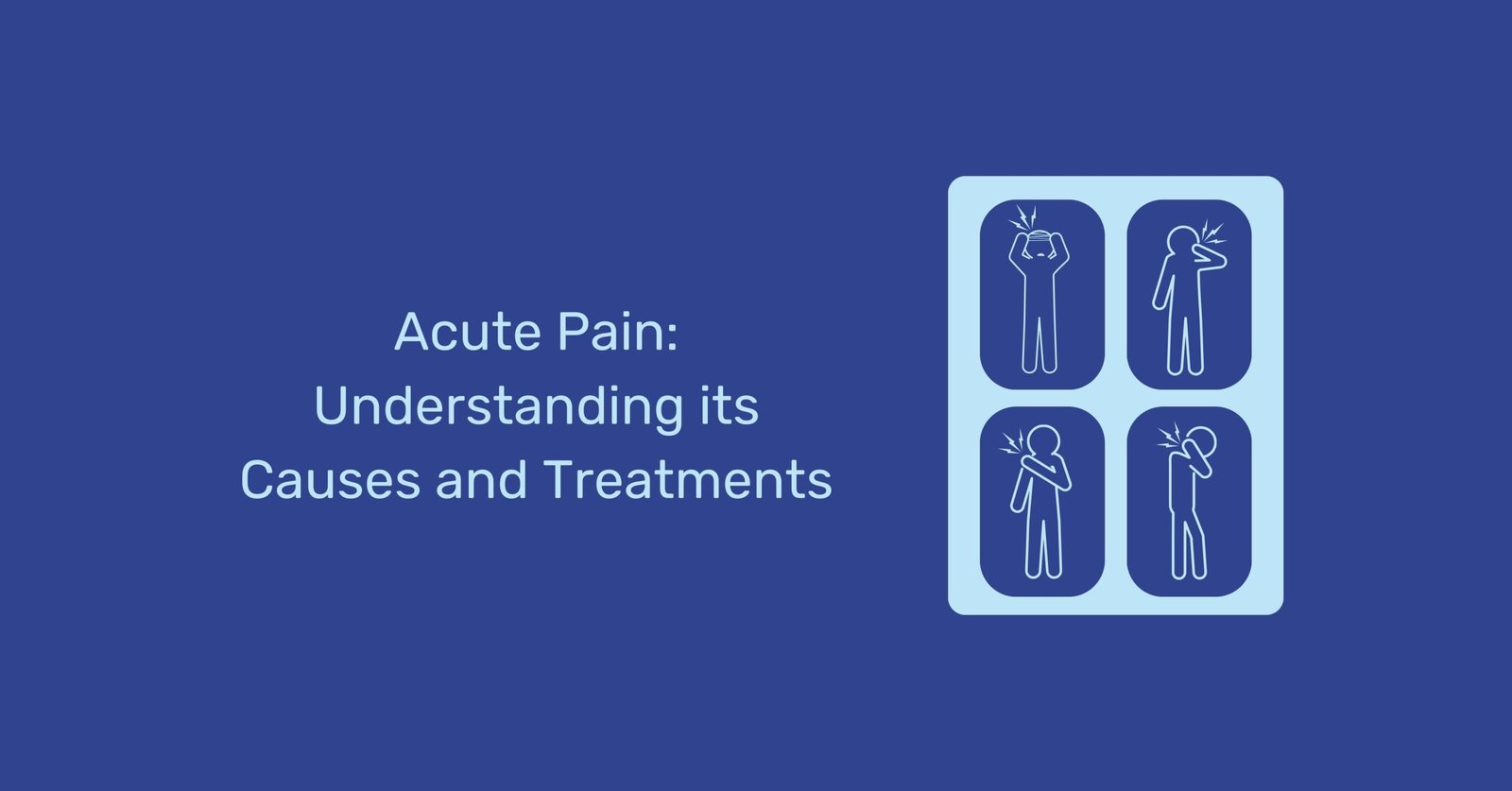
Understanding Acute Pain: Causes, Symptoms, and Treatment Options
Acute Pain Understanding the causes, symptoms, and treatment options
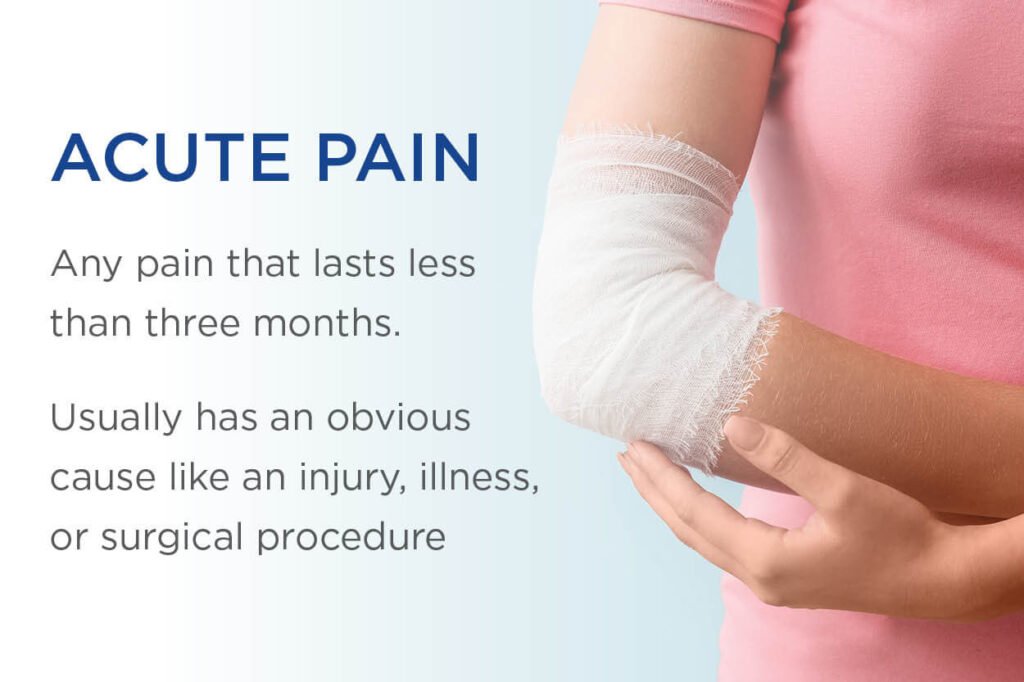
Pain is considered a normal response of the body towards any kind of injury or harmful stimuli. Acute pain is specially beneficial for the body as it acts as a warning sign to alert the body about potential harm and ensuing protective measures. Chronic pain is dissimilar; it lasts for months and even years, whereas acute pain arises all of a sudden and is generally short in nature. However, the causes, symptoms, and treatment options should be known about acute pain to handle it better and promote quick recovery.
Acute pain is defined as a new onset and is commonly the result of an injury or surgery or a medical condition. Such pain usually subsides as the cause of the pain heals; this could be in days or weeks. Acute pain is a very important warning signal that tells your brain that something’s wrong: it’s a cut, a burn, or a broken bone, for example.
Acute pain can be severe and annoying, but it usually is short-lived. Chronic pain is that which lasts longer than after healing should be taking place and sometimes becomes harder to treat over time.
Causes of Acute Pain
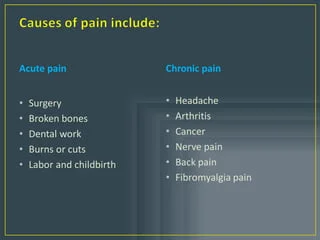
Acute pain can stem from anything from an injury or trauma to many others including:
Injuries and Trauma
◾Sprains and strains: overstretching or tearing muscles and tendons.
◾Fractures and broken bones: sudden trauma to the bone caused by accidents or falls.
◾External injuries to the skin and tissues, such as cuts, burns, and bruises.
Surgical Operations
Any form of surgery, be it a small dental extraction or major surgery, can cause acute pain during the healing process after the operation.
Infections
Examples include tooth abscess, appendicitis, and urinary tract infection (UTI). Acute pain is usually localised to the affected area.
Inflammation
Such as gout or acute arthritis, can cause inflammation within the joints, which is accompanied by sudden pain and swelling in the joint.
Headaches and Migraines
Both tension headaches and migraines are common causes of acute pain, which often arise in response to stress, dehydration, or other triggers.
Other Medical Conditions
a variety of medical conditions, such as kidney stones or gallstones, along with injuries, like slipping a disc in your back, can contribute to severe episodes of acute pain.
Symptoms of Acute Pain
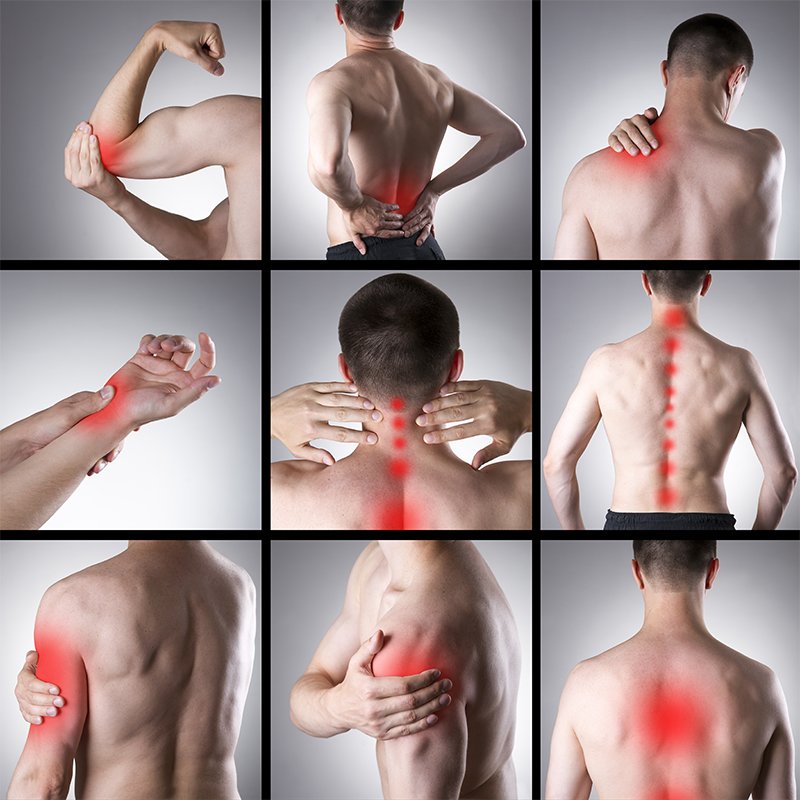
Acute pain can have many forms depending on the cause for such pain. However, some of the common symptoms include:
◾Sharply stabbing pain: Often accompanied by pain in the area of injury or inflammation.
◾Throbbing or pulsating pain: This is often caused by swelling or an infection.
◾Localized aching: Acute pain is often focused on one part of the body, perhaps a sprained ankle or a cut on the hand.
◾.Increased sensitivity: The acute pain area might be sensitive to touch, heat, or cold.
◾Swelling, bruising, or redness: Swelling or visibly altered skin may accompany the pain in cases of injury or inflammation.
◾Inability to move or use the affected part of the body: This is common in cases of injury to muscles, joints, or bones.
However, it is important to remember that it can abruptly start and be severe but otherwise improves with healing of the injury or resolution of the condition.
Treatment for Acute Pain
Treatment depends on the severity and source of acute pain. The aim of treatment is pain relief, usually with an intervention to cure the cause. Following are a few treatments to alleviate acute pain.
Rest and Ice:
◾Rest: Avoiding strain or movement of the affected area while it heals can be helpful for acute pain.
◾Ice: Applying a cold compress to an area can help reduce inflammation and numb pain, which is helpful especially after an injury, for 15–20 minutes at a time.
Over-the-Counter (OTC) Pain Relievers:
◾Ibuprofen (Advil), acetaminophen (Tylenol), naproxen (Aleve), tapentadol, tramadol, or oxycodone can help alleviate mild to moderate acute pain by reducing inflammation or blocking pain signals.
◾Topical medications applied directly to the skin include creams or gels containing menthol or lidocaine and other products.
Heat Therapy
◾Applying a heat pack or taking warm baths can relax tight muscles that are causing pain in muscle strains or joint pain.
Physical Therapy and Exercise
◾In musculoskeletal injuries, physical therapy can be suggested to condition the muscles and enhance flexibility, which may avoid further pain episodes.
◾Stretching and gentle exercises could be beneficial for back pain or stiffness neck.
Medications
◾More powerful drugs might be prescribed by doctors to deal with the pain, such as opioids, muscle relaxants, or topical analgesics.
◾Nerve pain medications might be prescribed as a next step when the acute pain is nerve related as in shingles or sciatica.
Alternate Therapies
◾Acupuncture, spinal manipulation/ chiropractic care, massage therapy are ways to administer pain relief to some acute pains, especially musculoskeletal.
◾Mindfulness practice: Deep breaths or meditation can reduce the emotional suffering that usually accompanies acute pain.
Surgery is not necessary, unless indicated by the situation.
In certain cases, surgery may be required to treat the underlying cause of acute pain, such as when there’s a broken bone that needs setting or a tumor causing pressure on a nerve.
When to Seek Medical Help

While acute pain is often manageable with self-care, it’s important to know when to consult a healthcare professional. Seek medical attention if:
1.The pain is severe and unmanageable.
2.Pain is accompanied by other symptoms, such as fever, nausea, or vomiting.
3.There is swelling, bruising, or an inability to move the affected area.
4.The pain persists for more than a few days without improvement.
5.You experience sudden, unexplained pain (such as chest pain or intense abdominal pain).
Conclusion
Acute pain is an unavoidable part of life, often arising from injuries, infections, or medical conditions. While it can be distressing, acute pain serves an important protective function, alerting us to potential harm and promoting healing. By understanding its causes, recognizing symptoms, and using effective treatments, individuals can manage acute pain and recover more quickly.
Acute pain should always be brought to a professional’s attention if it does not improve with basic treatment or, within an appropriate time frame for resolution, persists as chronic pain.
